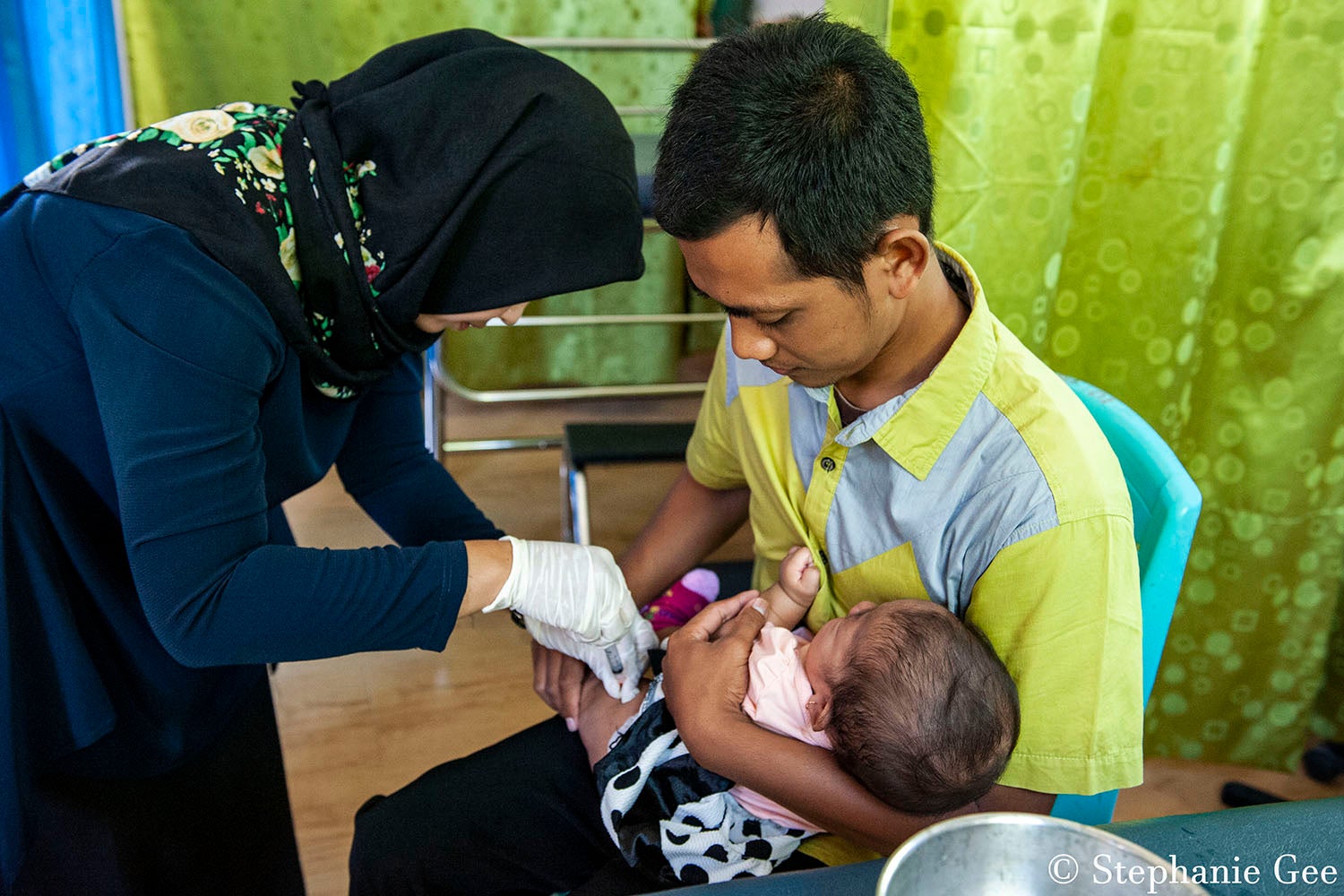Last month’s United Nations General Assembly in New York sought to accelerate global progress on many of the world’s most pressing problems, including climate change and gender equality. During the assembly, Michele Barry, director of the Stanford Center for Innovation in Global Health and senior associate dean of global health, participated in a panel designed to elevate women’s health needs as a key priority.
As the founder of the international nonprofit WomenLift Health, she’s a leading voice calling for greater women’s leadership in global health. Given the close ties between climate and health, she also advocates for greater female representation in climate science and negotiations, such as the upcoming COP29 climate change convention.
The current election season has placed women’s health concerns and leadership in the national spotlight, but women have long been sidelined in pivotal medical research and health care initiatives, Barry said. At a time of growing interest in women’s health, Barry discussed climate’s disproportionate impact on women, other overlooked health concerns, and the distinct ways that female leadership can accelerate solutions to some of the world’s most challenging health problems.
In what ways does climate change disproportionately affect women’s health?
Climate change takes an outsized toll on the health and livelihoods of women, particularly in lower-income settings, due to societal inequities and traditional roles that can increase their exposure to environmental risks.
From elevated food insecurity to infectious disease threats to gender-based violence, climate change can worsen gender inequities in many ways. Air pollution and extreme heat harm reproductive health and increase the risk of miscarriage. Extreme weather and climate disasters create an increasing number of climate refugees, and displaced women are at a greater risk for discrimination and gender-based violence. Yet, despite relatively large amounts of funding now flowing to women’s health, little to none of it addresses this nexus of women’s health and climate. This area urgently needs more funding and attention.
What other women’s health concerns should the world pay more attention to?
We need more studies into women’s health concerns along the entire life cycle, especially as people live longer. Previously underfunded issues unique to women as they age include menopause, urinary incontinence, and loss of libido. Impressively, President Biden issued an executive order to increase the study of women’s health by $12 billion, with $200 million going to research addressing problems encountered in a woman’s full lifespan.
Prevention is another critical area. Cervical cancer, the fourth most common cancer among women globally, is highly preventable and curable with screening and vaccination for HPV. We’ve seen great advances in technology that allow women to test themselves for HPV, but we still need to make this lifesaving technology accessible and affordable.
Finally, abortion restrictions in the U.S. hamper women’s access to preventive reproductive and emergency care and could have global implications. Globally, the Mexico City Policy and Helms Amendment have prevented U.S. aid from going to an overseas entity that offers or even refers women for abortion services – impacting funding for contraception, HIV, tuberculosis, and maternal and child health. While rescinded under the current presidential administration, this policy could be reinstated under future administrations, as it has in the past.
You’ve advocated for more women in positions of leadership to accelerate solutions to the urgent climate crisis. Why is that important?
Women bring valuable and different perspectives given the distinct ways they are impacted by climate change. Women’s leadership in government tends to correspond with greater environmental protections and more robust climate policies. Yet while many women are engaged in climate research and advocacy, their role in leadership has not caught up. When you look at major decision-making gatherings such as the U.N. climate change conferences, a tiny percent of those in leadership positions are women. Since the first international climate conference in 1995, for example, only five women have been appointed as COP presidents.
If we want to tackle a big problem like climate change, we must ask ourselves which voices aren’t being included who might have something to contribute. We need to have more women physically at the tables where these crucial decisions are being made.
How can we empower more women to become global health and climate change leaders?
Center the voices of women, youth, and the communities most impacted by climate change when setting agendas and goals related to climate change. Call out inequities, as did The Guardian when it reported earlier this year that the COP29 climate summit organizing committee included no women among its 28 members. Following the exposé, a handful of women were added.
Male allyship is a critical but often overlooked means of elevating women leaders. My center is researching the components of effective male allyship in advancing women’s leadership and building a toolkit to support future allies.
Networking, collective voice, and mentorship are crucial to elevating women as leaders in both global health and climate and health. For example, this year’s WomenLift Health Global Conference convened over a thousand people from over 40 countries to advance mentorship in women’s health. Events like this, which stemmed from a Stanford Women Leaders in Global Health Conference of a few hundred in 2017, illustrate the power of the global movement to achieve health equity for women.
For more information
Barry is also the Drs. Ben & A. Jess Shenson Professor in the School of Medicine, a professor of medicine, senior fellow at the Stanford Woods Institute for the Environment.
Media contact
Jamie Hansen, Global Health Communications Manager: jmhansen@stanford.edu
